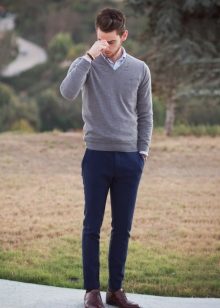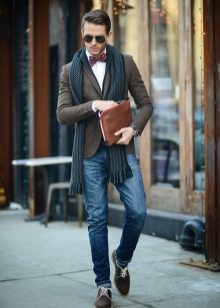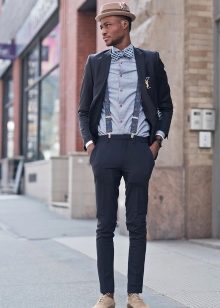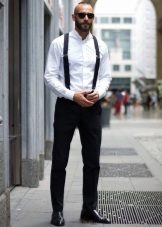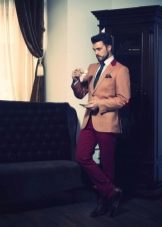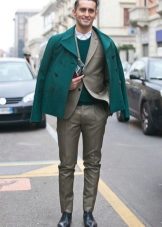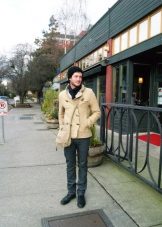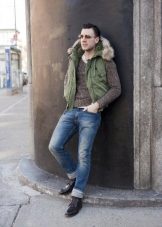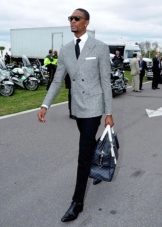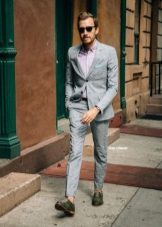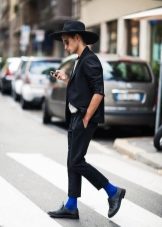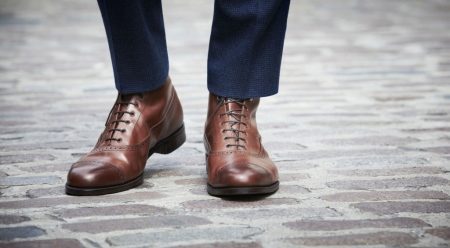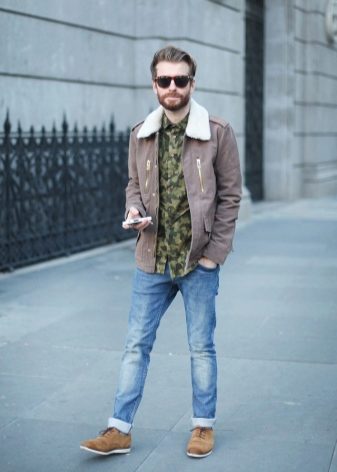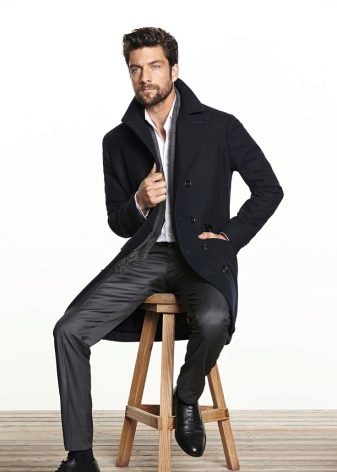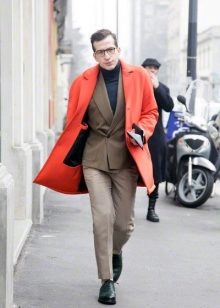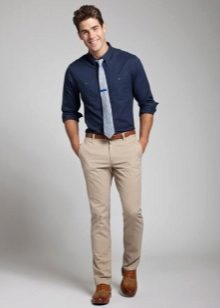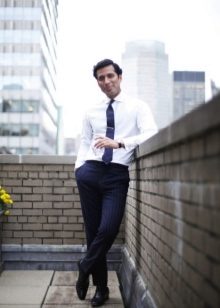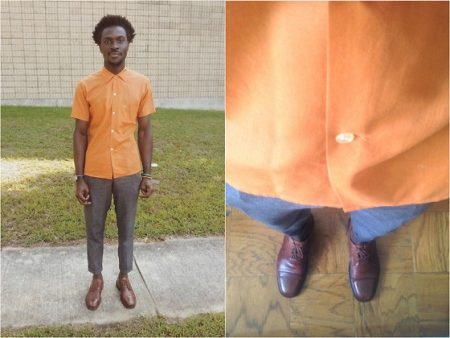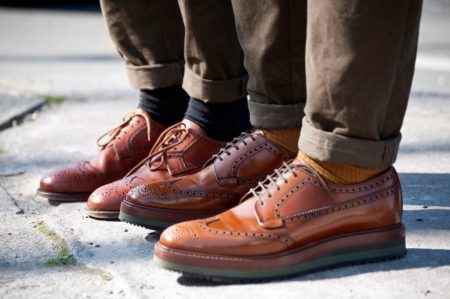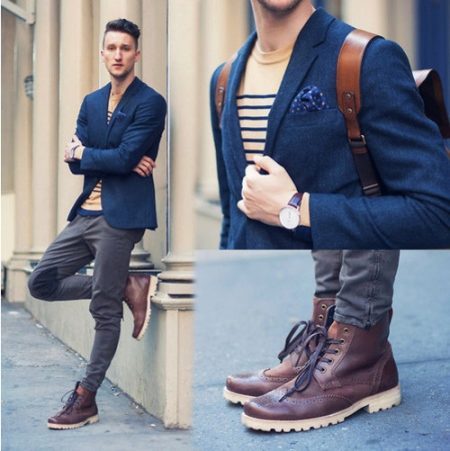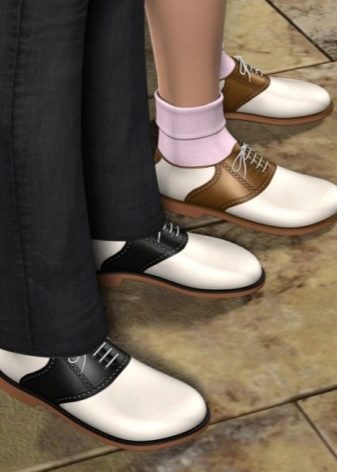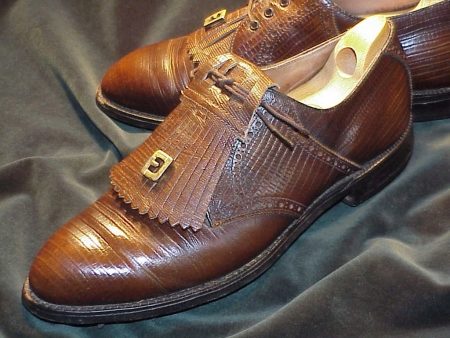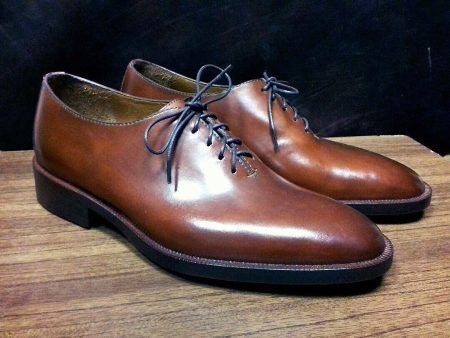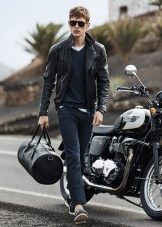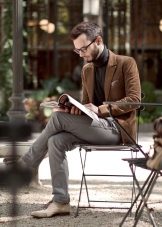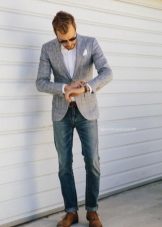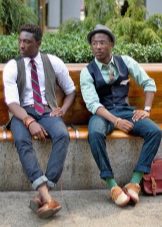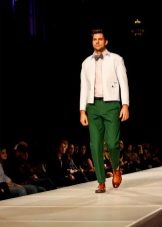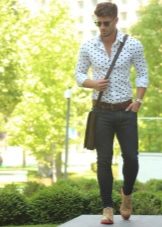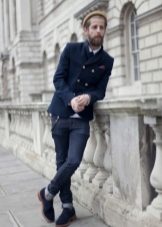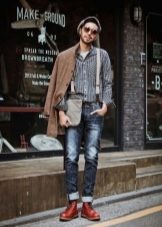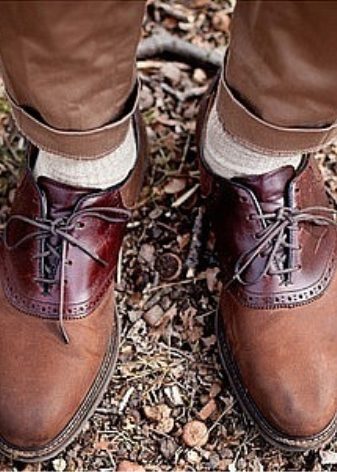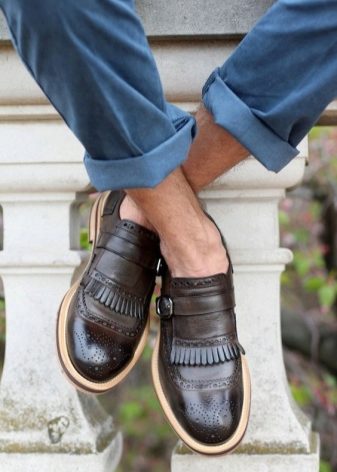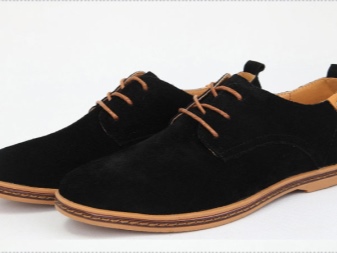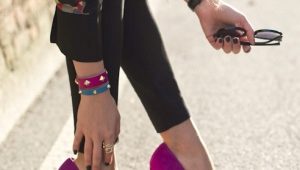Men's Oxfords
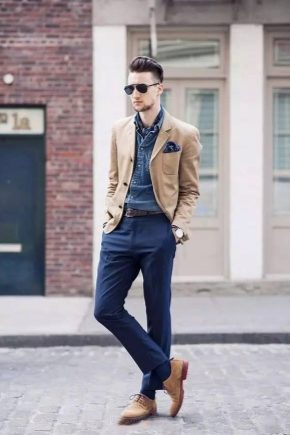
What makes oxfords oxfords - closed lacing
Oxfords are often confused with the derby, another classic model of men's shoes. To clarify, you need to divide the boot into 2 components: the front (the vamp) and the rear (berets). The front is the toe, the back is the heel, the heel and the two sides. So, on Oxfords, the lace holes are located on the berets and they are as if closed or separated from the vamp.
Initially, these shoes were made black or brown and had a strict, one might say, dry, classic design. However, today they can be combined with different styles of clothing. Depending on the functional purpose and fashion trends, these shoes in the modern world are made from calfskin or artificial leather, suede or patent leather, and even from rough linen.
Prehistory
Fashion historians are still arguing over where oxfords came from. Some argue that they first appeared in Scotland, others - in English Oxford. However, both are right in their own way. Having appeared in Scotland and Ireland, such shoes were called “Balmorals” in honor of the Balmoral Castle, and only after they became popular among students at Oxford University and became fashionable throughout Europe, and later in the USA, they became known as “Oxford”. .
Oxfords are descended from the "Oxons", "semi-boots" with slots on the sides, which became extremely popular among students at Oxford University in 1800. Over time, this shoe began to undergo changes in the exterior design: first, the side slits turned into side lacing, then the two lacing were replaced with one and it moved up to the center. Historians are also wondering whether these changes have occurred precisely at Oxford, which is really unlikely. However, it can be said with certainty that the mention of oxfords in 1846 by Joseph Sparks Hall in The New Monthly Magazine suggests that by that time they were firmly entrenched in the wardrobe of men.
It is ironic that oxfords were originally popular among students, but today it’s too classic a type of shoe for campuses, even for English ones. Although this is just an evolution of style.
Distinctive features:
- Closed lacing;
- Open ankle;
- Low heel.
It should also be mentioned that, at oxford, the lace holes are located on the side of the shoe (berets).
How to lace oxfords
As mentioned above, the holes for the lace are usually located on the berets (except for shoes with a whole vamp and seamless shoes). To properly lace up the shoe, you need to hold the cord inward on both sides, so that the overlap of both ends occur inside the shoe.
The British model of Oxford today has 5 lace holes on each side, while the American - 6.
Oxford species
Common Oxfords
As a rule, ordinary oxfords consist of berets and vamps. They do not have a separately delineated and marked with a seam sock or perforated ornament around the perimeter of the product. Their style is simple and yet elegant. For evening dresses, black patent leather shoes are usually chosen - this is traditional. Today, however, you can choose and calf-skin polished to a shine - each one's own.
Cap toe oxford
Cap Toe (Kaptoi) oxfords, perhaps the most common of the existing to date. The most popular color, naturally, is black, although they are produced both in brown, and in red, and in red.
An important feature of this shoe is the added third component.A separate nose section also joined the berets and vamp. In addition, it is impossible not to notice and separately sewn the back of the product - the heel.
These shoes are worn with both an elegant suit and jeans. If you can't afford a separate pair of patent leather or polished leather shoes, then Cap Toe Oxfords will come to your rescue. That is why they are called "evening shoes for poor men", which means that it cannot be worn at events where the dress code "Evening toilet" is indicated.
Brogues
A distinctive feature of Brogie shoes is a clearly delineated wing-shaped toe that extends along the sides to the back of the product. Visually, they resemble the Russian letter M or the English W, depending on which side to look. Unlike Cap Toe, this model is more suited to the informal style of clothing. And although technically they are a type of oxford, Brogues have long been associated, as a separate shoe model. Perhaps because she lost the properties of classic shoes.
Brogues can be seen on the streets of the city and in the winter, because they are made in the winter variation. These shoes are usually tall and have more urban style, and men prefer to wear them with leg trousers tucked inside.
Saddle oxford
This model of oxfords does not have a clearly defined sock, but they have an additional strip of leather that runs along the center of the boot from above and to the sole, repeating the lacing length. Usually the color of this piece of leather is different from the overall color of the product and resembles a saddle. Historically, Saddle Oxfords are considered to be American Oxford style.
Kiltie Oxford
Kiltie (Kilti) oxfords do not have much popularity today. Their feature is the presence of an additional tongue with a fringe, which is located on top of the lacing.
Wholecut oxfords
This model is made using a single piece of leather and therefore has only one seam on the back of the product (on the heel). Usually shoes are sewn from several pieces. Sewing shoes from one piece is quite difficult, therefore, these oxfords are rather laborious to manufacture, they require more raw materials and special skills, respectively, are expensive. Outwardly, they look very streamlined and smoothly smooth.
Seamless or Seamless Oxfords
Seamless oxfords are certainly very similar with Wholecut oxfords in that both models are made from one single piece of leather. However, Wholecut shoes have a single seam on the back of the product, and Seamless oxfords do not have it at all, thereby complicating the process of their manufacture. This shoe model requires large volumes of raw materials for its production than Wholecut, and two times more than conventional Cap Toe oxfords. In this regard, such a pair of shoes, as a rule, is made to order and not available in the mass market. Sometimes the term Wholecut is used to refer to seamless oxfords, because the former are better known, nevertheless, this is technically incorrect.
Fashion trends
Today, it is wrong to call oxfords exclusively classic shoes, as they are made in different colors, variations and using different materials, for example, suede. Considering the latest trends in the world of fashion in mixing different styles, oxfords are gaining more and more freedom in the men's wardrobe and the question of what to wear them is no longer rhetorical.
To assemble a stylish male ensemble, having oxfords as a starting point, is not difficult. Whether it is ordinary classic Oxfords or Cap Toe, you can always wear them with a business suit or with pants of any cut, and it doesn’t matter what the top is like (checked shirt, cardigan or T-shirt).
It should be noted that stylists do not recommend wearing jeans with black oxfords, they are more suitable for such colors as brown, red, cognac. Nevertheless, black color presupposes more classics, and black Cap Toe should be in the arsenal of every man, because you can always wear them to the office, to a wedding, funeral, social events.
If you compare Cap Toe and Brogues, then the latter are more casual style.Although in black they can be worn in the office, but in any other colors, they will be more free style. These shoes can be combined with tweed and denim.
As for Saddle and Kiltie Oxfords, these shoes are super casual. Already having ordinary or Cap Toe, as well as Brogues, you can think about buying Saddle and Kiltie, because the above models are more versatile than these. These shoes can be combined with jeans, colored chinos, corduroy pants.
In order to add color to old shoes and breathe new life into it, without spending much money, fashion critics suggest simply trying them on with a different color of lace. At the same time it should be a very high-quality thin rounded lace, and not flat, because the rounded one looks more elegant. With black oxfords, the laces of dark and light shades of gray are well combined. Dark brown shoes will look luxurious on brown boots, yellow ones on blue ones and blue ones on white ones.
